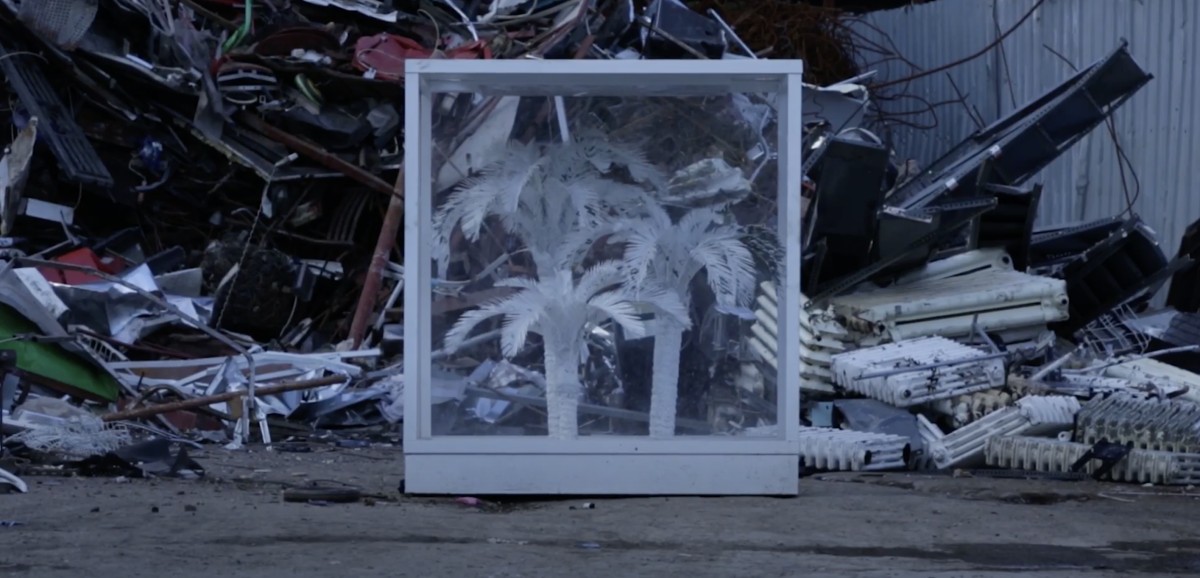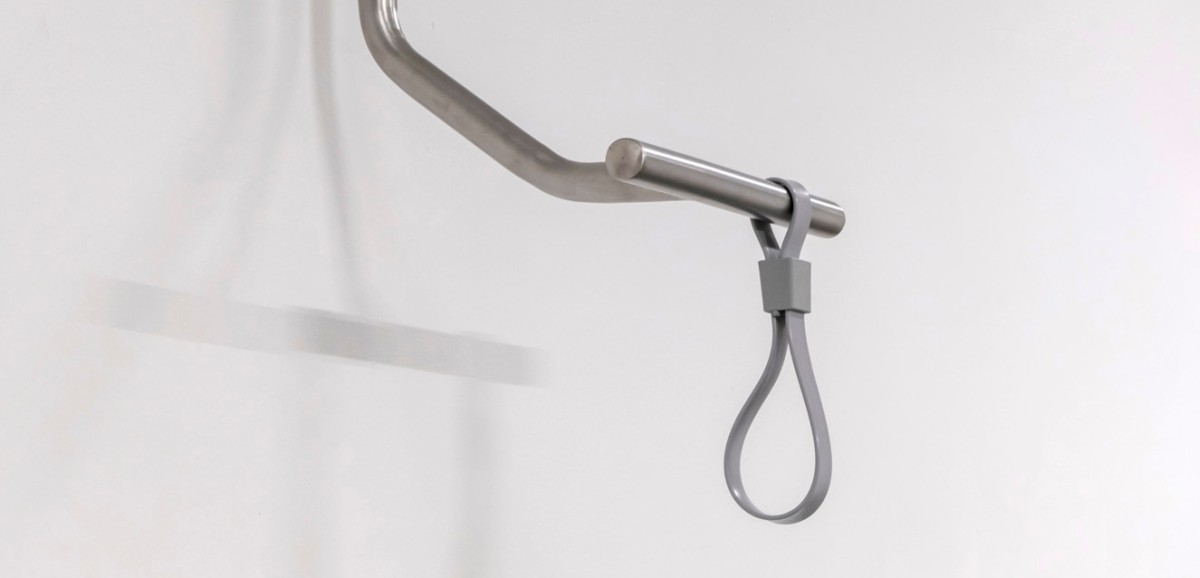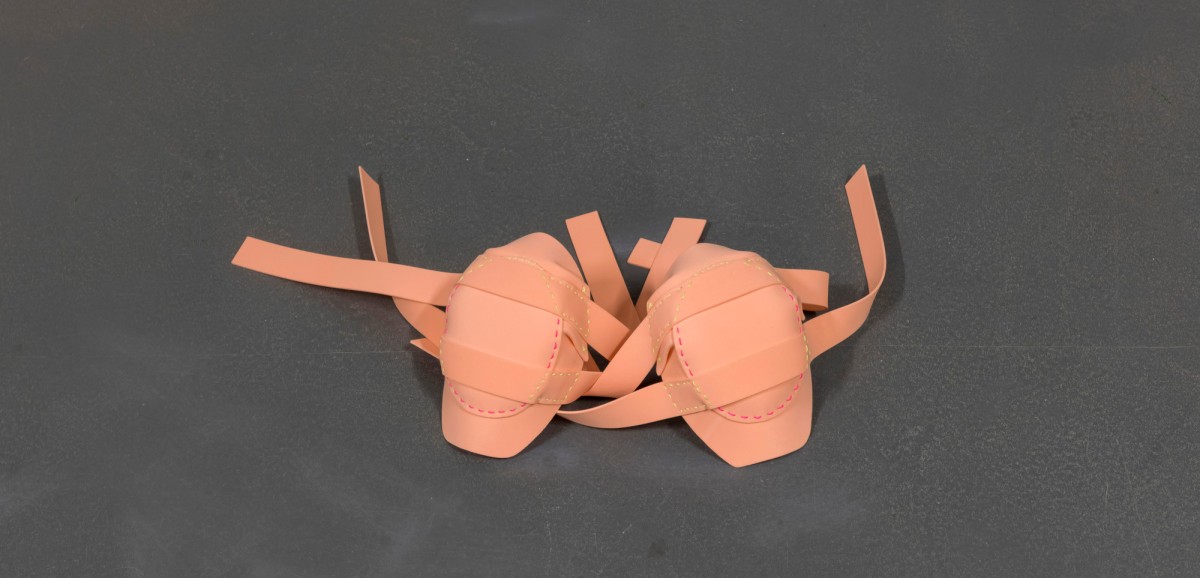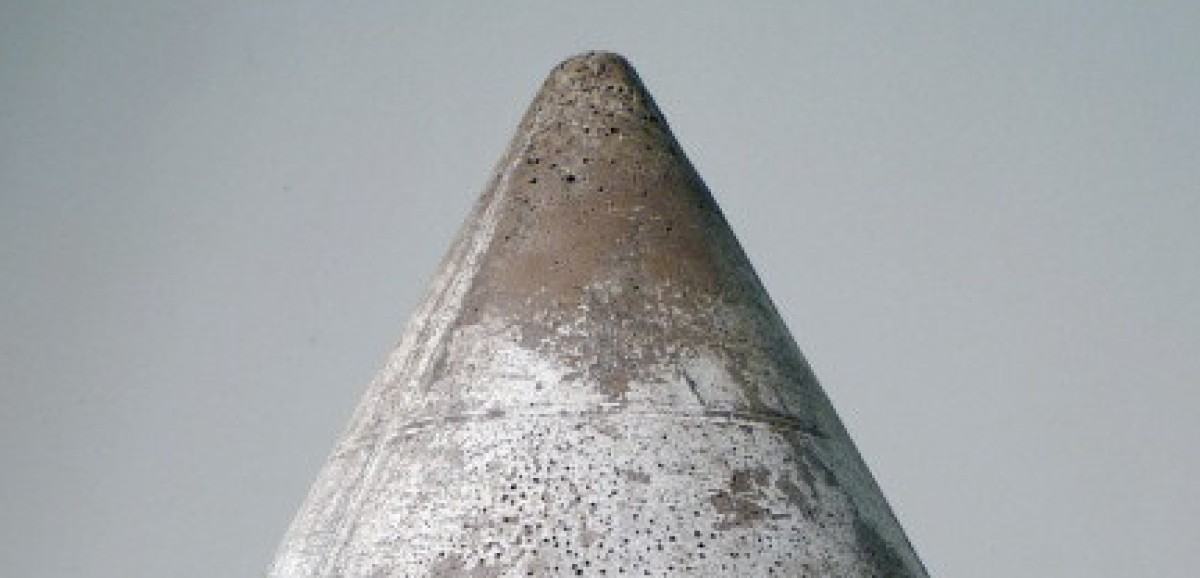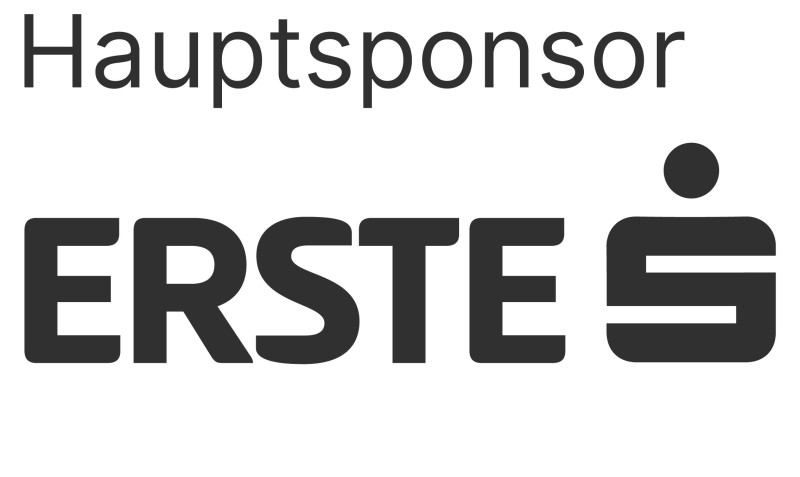Volkskundemuseum Wien
Laudongasse 15–19, 1080 Wien
T: +43 1 406 89 05
F: +43 1 406 89 05.88
E: office@volkskundemuseum.at
Hildebrandt Café
T: +43 1 406 89 05.10
E: hi@hildebrandt.cafe
Online Tischreservierung
Öffnungszeiten
Museum:
Di bis So, 10.00 bis 17.00 Uhr
Führungen und Programm: Termine
Bibliothek:
Besuch nach Voranmeldung
SchönDing Shop | Café:
Di bis So, 10.00 bis 17.00 Uhr
Hildebrandt Café:
Di bis So, 10.00 bis 18.00 Uhr
Mostothek:
Di, ab 17.00 Uhr
Eintritt
frei im ganzen Museum
Eröffnung: Mi, 18.5.2022, 17.00 bis 20.00 Uhr
***
EN
Hosted by Queer Museum Vienna in partnership with Volkskundemuseum Wien, How does the body take shape under pressure? brings together an international group of contemporary artists whose works are coming from the myriad experiences of pressure and questioning the dynamics of unproportional forces. Working between the lines of passive and defensive, social and intimate, pressure and pleasure; the exhibition presents artists’ allegorical positions to ponder upon political repression against queer&feminist existences. Curated by Alper Turan and Nazım Ünal Yılmaz, the exhibition, with the majority of the artists from Turkey, establishes an imaginary bridge between Vienna and Istanbul. The exhibition will take place between 19.5.2022 and 15.6.2022 at the Queer Museum Vienna in one room of the Volkskundemuseum, which has been made available to the QMV; a nomadic museum creating spaces for queer art, culture, and history as well as a queer future and futurity.
In the exhibition, we witness the bodies that are hanged, knocked down, cornered, pushed, and pressed against; we also see objects: forms of pleasure, and forms of ferocity that are activated on flesh by pushing the corporal limits. Artists’ works in the exhibition are creating intimate scenes mimicking society’s mechanics, unfolding intertwined narratives, posing primal and peripheral questions: How does political coercion manifest itself on a single body? How parallel run the power dynamics in our sexual practices to the societal ones? How does one transgress the pressure without pushing back? The images of bodies in the grip do not follow gestures of active resistance, assertive defense, or antagonism; instead, the bodies under pressure let themselves be pressed; are they submissively disobeying or practicing and acknowledging helplessness?
Dorian Sari, in their video work, A&a (If art fails, thought fails, justice fails) (2019), unveils a fight between two people opposed by dissimilar forces. While their nudity and bodily engagement create a certain eroticism, what we see is an inequality, oppression, and tyrannical torture that echoes social and racial realities. İz Öztat, in the video work Suspended (2019) made in collaboration with Ann Antidote, equates the suspension of freedom with becoming a body without willpower. Zeynep Kayan, in her video one one two, one two three: chair (2021), presents a scene where we see a figure that was pushed, pressed, cornered against the wall by another silhouette as if one is chased by its shadow. Toni Schmale’s sculpture merges rigid, brutal, industrial with sensual, libidinal, and unique; crystallizes the exhibition's standpoint in a form of an enormous buttplug. Can Küçük in his sculpture, Centuries (2020), showcases a singularized subway handle as an orthopedic device for a body trying to stand in balance. In his Son (2020), Küçük creates knee pads, pink cushiony materials that are devised to protect the body from potential falls. Natalia Gurova showcases a sculptural assemblage with reproductions of Venus of Milo, one of the most copied forms of female beauty in Europe. Venus figurines in silicone are bruised, missing both arms, and barely standing upright. The table, which is placed in the exhibition with a human arm hanging invitingly from the middle and pointing to the missing arms of Venus, looks at the relationship between the body and the furniture. The table, barely standing with its bruised legs, suggests a battered body.
Cansu Yıldıran's three photographs describe three bodies with traces of violence in the form of cuts, tattoos, and wounds, questioning the sociality of the risks taken and wounds haven under personal responsibility. Carlos Vergara, in his installation, Untitled (Caribbean Dreams) (2021), self-exoticizes his Caribbean heritage and questions his home. He stacked a bundle of red monobloc chairs towered over a plastic palm tree evocating a pile of bodies fastened to each other and holed, run through, violated by phallic. Home and its destructive forces are pivotal in Nihat Karataşlı’s video, A Home to Dream of (2017) which documents the destruction of his own work, Home, a sculpture of palm trees in a lightbox. This act of documenting the destruction of the home creates a dream in itself, also suggesting the disfigurement and demolition that lead up to recreations.
How does the body shape under pressure? creates a space of reflections on negotiating the pressure within the intertwined structures of social, sexual, and political. The exhibition, within the setting of a folklore museum, suggests a queer critique of material culture and museum-making and questions how much violence and desire are being stored in the body and how much of a body can fit in a museum. The exhibition, commissioned by the Vienna Queer Museum, reminds how oppression and violence are concealed in the glorification of queer existence in today's western politics, and how fascism establishes itself in the relationship between two people.
About Queer Museum Vienna: The Queer Museum Vienna (QMV) is an association and an open initiative that is in the process of exploring the requirements for a queer culture house and is now a guest at the Volkskundemuseum (Folklore Museum) of Vienna. The aim is to give an outlook on a projected, future house for queer cultural history and art in Vienna. Among other things, the main question is how queer artistic works, culture, and lifestyle relate to folklore and its museumization. Through exchange and discussion, its members want to find out what is expected of a queer museum and what it should be able to achieve. In this respect, the guest museum sees itself as a place for networking and as a platform for queer activist projects, voices, and opinions. As a showcase, the museum pushes open the window into a queer future, futurity. At the same time, it celebrates the common history that has been brought into focus. A history marked by ostracism, exclusion, and persecution, by hiding and shame, by the individual and collective search for identity, and the attempt to locate oneself in the social fabric under perspectives such as legalization, equality, and pride.
Queer Museum Vienna is supported by Josefstadt and WASt - Wiener Antidiskriminierungsstelle. Dorian Sari's participation in the exhibition is supported by The Swiss Arts Council Pro Helvetia.
Thanks to: Galery Zilberman, İstanbul, Berlin; Christine Koenig Galerie, Vienna; Öktem & Aykut Gallery, İstanbul; Wilde Gallery, Geneva, Zürich, Basel.
For press inquiries:
Alper Turan, alper2ran@gmail.com
Nazım Ünal Yılmaz, nazimunalyilmaz@gmail.com
Florian Aschka, queermuseumvienna@gmail.com
Zum Pressebereich
***
DE
Die Ausstellung bewegt sich zwischen den Linien von passiv und defensiv, sozial und intim, Lust und Zwang, globalem Norden und Süden und präsentiert allegorische Positionen von Künstler*innen, die über die politische Unterdrückung von queeren Existenzen nachdenken. Die von Nazım Ünal Yılmaz und Alper Turan kuratierte Ausstellung, bei der die meisten Künstler aus der Türkei stammen, schlägt eine imaginäre Brücke zwischen Wien und Istanbul.
Die Ausstellung wird vom 19.5.2022 bis 15.6.2022 im Queer Museum Vienna in einem Raum des Volkskundemuseum Wien stattfinden, die dem Queer Museum Vienna gratis zur Verfügung gestellt wurden. Durch die Vielfalt der ausgestellten Arbeiten, aber auch dem Rahmenprogramm aus Artist Talks und Führungen werden queere künstlerische Positionen aus der Türkei für die Wiener Besucher*innen, aber auch das internationale Publikum, das während des Pride Months im Juni in Wien sein wird, sichtbar. Durch die Vielfalt der ausgestellten Werke, aber auch durch das Rahmenprogramm mit Künstlergesprächen und Führungen, schafft die Ausstellung einen Austausch zwischen Wiener und türkischen queeren Künstler*innen, die den gesellschaftlichen Druck im Rahmen ihrer jeweiligen Kontexte und Milieus verhandeln.
Dorian Sari zeigt in ihrer Videoarbeit A&a (If art fails, thought fails, justice fails) (2019) einen Kampf zwischen zwei Menschen, die sich ungleichen Kräften gegenüberstehen. Während ihre Nacktheit und ihr körperliches Engagement eine gewisse Erotik erzeugen, sehen wir Ungleichheit, Unterdrückung und tyrannische Folter, die soziale und rassische Realitäten widerspiegeln. İz Öztat, ein in Istanbul lebender Künstler, der mit Ann Antidote zusammenarbeitet, setzt in der Videoarbeit Suspended (2019) die Aussetzung der Freiheit mit dem Werden eines Körpers ohne Willenskraft gleich. Zeynep Kayan zeigt in ihrem Video in Dauerschleife eine Szene, in der wir eine Figur sehen, die von einer anderen Silhouette an die Wand gedrückt, gepresst und in die Enge getrieben wird, als würde man von ihrem Schatten verfolgt. Die Skulptur von Toni Schmale verbindet das Starre, Brutale, Industrielle mit dem Sinnlichen, Libidinösen und Einzigartigen und kristallisiert den Standpunkt der Ausstellung in einer Form. Carlos Vergaras exotisiert in seiner Installation Untitled (Caribbean Dreams) (2021), sein karibisches Erbe selbst und stellt seine Heimat in Frage. Er hat ein Bündel roter Monoblockstühle über einer Plastikpalme aufgestapelt, die einen Haufen von Körpern evozieren, die aneinander befestigt, aber durchlöchert, abgesäbelt und durch das Phallische geschändet sind. Das Zuhause und seine zerstörerischen Kräfte spielen eine zentrale Rolle in Nihat Karataşlıs Video A Home to Dream, das die Zerstörung seiner eigenen Skulptur Home dokumentiert, die er für eine Ausstellung in Istanbul produziert hat.
Die Ausstellung wird sich auch mit der Sammlung des Volkskundemuseum Wien befassen, und zwar mit Werken von Künstler*innen und ethnografischen Materialien, die Utensilien zusammenbringen, die historisch zur Disziplinierung des Körpers verwendet wurden. Zur Ausstellung wird es ein Rahmenprogramm aus Artist Talks und Führungen geben, bei dem sich Künstler*innen mit den Besucher*innen aus unterschiedlichen Communities austauschen können. Die Führungen sollen auf Türkisch, Arabisch und Englisch stattfinden.
Eine Ausstellung kuratiert von Nazim Ünal Yilmaz und Alper Turan in Kooperation mit dem Queer Museum Vienna.
Künstler*innen: Natalia Gurova, Nihat Karataşlı, Zeynep Kayan, Can Küçük, İz Öztat and Ann Antidote, Dorian Sarı, Toni Schmale, Carlos Vergara, Cansu Yıldıran
Im Rahmen des Queer Museum Vienna, das von Jänner bis August 2022 im Volkskundemuseum Wien zu Gast ist.
Mehr zum Queer Museum Vienna: www.queermuseumvienna.com
***
EN
Hosted by Queer Museum Vienna in partnership with Volkskundemuseum Wien, How does the body take shape under pressure? brings together an international group of contemporary artists whose works are coming from the myriad experiences of pressure and questioning the dynamics of unproportional forces. Working between the lines of passive and defensive, social and intimate, pressure and pleasure; the exhibition presents artists’ allegorical positions to ponder upon political repression against queer&feminist existences. Curated by Alper Turan and Nazım Ünal Yılmaz, the exhibition, with the majority of the artists from Turkey, establishes an imaginary bridge between Vienna and Istanbul. The exhibition will take place between 19.5.2022 and 15.6.2022 at the Queer Museum Vienna in one room of the Volkskundemuseum, which has been made available to the QMV; a nomadic museum creating spaces for queer art, culture, and history as well as a queer future and futurity.
In the exhibition, we witness the bodies that are hanged, knocked down, cornered, pushed, and pressed against; we also see objects: forms of pleasure, and forms of ferocity that are activated on flesh by pushing the corporal limits. Artists’ works in the exhibition are creating intimate scenes mimicking society’s mechanics, unfolding intertwined narratives, posing primal and peripheral questions: How does political coercion manifest itself on a single body? How parallel run the power dynamics in our sexual practices to the societal ones? How does one transgress the pressure without pushing back? The images of bodies in the grip do not follow gestures of active resistance, assertive defense, or antagonism; instead, the bodies under pressure let themselves be pressed; are they submissively disobeying or practicing and acknowledging helplessness?
Dorian Sari, in their video work, A&a (If art fails, thought fails, justice fails) (2019), unveils a fight between two people opposed by dissimilar forces. While their nudity and bodily engagement create a certain eroticism, what we see is an inequality, oppression, and tyrannical torture that echoes social and racial realities. İz Öztat, in the video work Suspended (2019) made in collaboration with Ann Antidote, equates the suspension of freedom with becoming a body without willpower. Zeynep Kayan, in her video one one two, one two three: chair (2021), presents a scene where we see a figure that was pushed, pressed, cornered against the wall by another silhouette as if one is chased by its shadow. Toni Schmale’s sculpture merges rigid, brutal, industrial with sensual, libidinal, and unique; crystallizes the exhibition's standpoint in a form of an enormous buttplug. Can Küçük in his sculpture, Centuries (2020), showcases a singularized subway handle as an orthopedic device for a body trying to stand in balance. In his Son (2020), Küçük creates knee pads, pink cushiony materials that are devised to protect the body from potential falls. Natalia Gurova showcases a sculptural assemblage with reproductions of Venus of Milo, one of the most copied forms of female beauty in Europe. Venus figurines in silicone are bruised, missing both arms, and barely standing upright. The table, which is placed in the exhibition with a human arm hanging invitingly from the middle and pointing to the missing arms of Venus, looks at the relationship between the body and the furniture. The table, barely standing with its bruised legs, suggests a battered body.
Cansu Yıldıran's three photographs describe three bodies with traces of violence in the form of cuts, tattoos, and wounds, questioning the sociality of the risks taken and wounds haven under personal responsibility. Carlos Vergara, in his installation, Untitled (Caribbean Dreams) (2021), self-exoticizes his Caribbean heritage and questions his home. He stacked a bundle of red monobloc chairs towered over a plastic palm tree evocating a pile of bodies fastened to each other and holed, run through, violated by phallic. Home and its destructive forces are pivotal in Nihat Karataşlı’s video, A Home to Dream of (2017) which documents the destruction of his own work, Home, a sculpture of palm trees in a lightbox. This act of documenting the destruction of the home creates a dream in itself, also suggesting the disfigurement and demolition that lead up to recreations.
How does the body shape under pressure? creates a space of reflections on negotiating the pressure within the intertwined structures of social, sexual, and political. The exhibition, within the setting of a folklore museum, suggests a queer critique of material culture and museum-making and questions how much violence and desire are being stored in the body and how much of a body can fit in a museum. The exhibition, commissioned by the Vienna Queer Museum, reminds how oppression and violence are concealed in the glorification of queer existence in today's western politics, and how fascism establishes itself in the relationship between two people.
About Queer Museum Vienna: The Queer Museum Vienna (QMV) is an association and an open initiative that is in the process of exploring the requirements for a queer culture house and is now a guest at the Volkskundemuseum (Folklore Museum) of Vienna. The aim is to give an outlook on a projected, future house for queer cultural history and art in Vienna. Among other things, the main question is how queer artistic works, culture, and lifestyle relate to folklore and its museumization. Through exchange and discussion, its members want to find out what is expected of a queer museum and what it should be able to achieve. In this respect, the guest museum sees itself as a place for networking and as a platform for queer activist projects, voices, and opinions. As a showcase, the museum pushes open the window into a queer future, futurity. At the same time, it celebrates the common history that has been brought into focus. A history marked by ostracism, exclusion, and persecution, by hiding and shame, by the individual and collective search for identity, and the attempt to locate oneself in the social fabric under perspectives such as legalization, equality, and pride.
Queer Museum Vienna is supported by Josefstadt and WASt - Wiener Antidiskriminierungsstelle. Dorian Sari's participation in the exhibition is supported by The Swiss Arts Council Pro Helvetia.
Thanks to: Galery Zilberman, İstanbul, Berlin; Christine Koenig Galerie, Vienna; Öktem & Aykut Gallery, İstanbul; Wilde Gallery, Geneva, Zürich, Basel.
For press inquiries:
Alper Turan, alper2ran@gmail.com
Nazım Ünal Yılmaz, nazimunalyilmaz@gmail.com
Florian Aschka, queermuseumvienna@gmail.com
Zum Pressebereich
***
DE
Die Ausstellung bewegt sich zwischen den Linien von passiv und defensiv, sozial und intim, Lust und Zwang, globalem Norden und Süden und präsentiert allegorische Positionen von Künstler*innen, die über die politische Unterdrückung von queeren Existenzen nachdenken. Die von Nazım Ünal Yılmaz und Alper Turan kuratierte Ausstellung, bei der die meisten Künstler aus der Türkei stammen, schlägt eine imaginäre Brücke zwischen Wien und Istanbul.
Die Ausstellung wird vom 19.5.2022 bis 15.6.2022 im Queer Museum Vienna in einem Raum des Volkskundemuseum Wien stattfinden, die dem Queer Museum Vienna gratis zur Verfügung gestellt wurden. Durch die Vielfalt der ausgestellten Arbeiten, aber auch dem Rahmenprogramm aus Artist Talks und Führungen werden queere künstlerische Positionen aus der Türkei für die Wiener Besucher*innen, aber auch das internationale Publikum, das während des Pride Months im Juni in Wien sein wird, sichtbar. Durch die Vielfalt der ausgestellten Werke, aber auch durch das Rahmenprogramm mit Künstlergesprächen und Führungen, schafft die Ausstellung einen Austausch zwischen Wiener und türkischen queeren Künstler*innen, die den gesellschaftlichen Druck im Rahmen ihrer jeweiligen Kontexte und Milieus verhandeln.
Dorian Sari zeigt in ihrer Videoarbeit A&a (If art fails, thought fails, justice fails) (2019) einen Kampf zwischen zwei Menschen, die sich ungleichen Kräften gegenüberstehen. Während ihre Nacktheit und ihr körperliches Engagement eine gewisse Erotik erzeugen, sehen wir Ungleichheit, Unterdrückung und tyrannische Folter, die soziale und rassische Realitäten widerspiegeln. İz Öztat, ein in Istanbul lebender Künstler, der mit Ann Antidote zusammenarbeitet, setzt in der Videoarbeit Suspended (2019) die Aussetzung der Freiheit mit dem Werden eines Körpers ohne Willenskraft gleich. Zeynep Kayan zeigt in ihrem Video in Dauerschleife eine Szene, in der wir eine Figur sehen, die von einer anderen Silhouette an die Wand gedrückt, gepresst und in die Enge getrieben wird, als würde man von ihrem Schatten verfolgt. Die Skulptur von Toni Schmale verbindet das Starre, Brutale, Industrielle mit dem Sinnlichen, Libidinösen und Einzigartigen und kristallisiert den Standpunkt der Ausstellung in einer Form. Carlos Vergaras exotisiert in seiner Installation Untitled (Caribbean Dreams) (2021), sein karibisches Erbe selbst und stellt seine Heimat in Frage. Er hat ein Bündel roter Monoblockstühle über einer Plastikpalme aufgestapelt, die einen Haufen von Körpern evozieren, die aneinander befestigt, aber durchlöchert, abgesäbelt und durch das Phallische geschändet sind. Das Zuhause und seine zerstörerischen Kräfte spielen eine zentrale Rolle in Nihat Karataşlıs Video A Home to Dream, das die Zerstörung seiner eigenen Skulptur Home dokumentiert, die er für eine Ausstellung in Istanbul produziert hat.
Die Ausstellung wird sich auch mit der Sammlung des Volkskundemuseum Wien befassen, und zwar mit Werken von Künstler*innen und ethnografischen Materialien, die Utensilien zusammenbringen, die historisch zur Disziplinierung des Körpers verwendet wurden. Zur Ausstellung wird es ein Rahmenprogramm aus Artist Talks und Führungen geben, bei dem sich Künstler*innen mit den Besucher*innen aus unterschiedlichen Communities austauschen können. Die Führungen sollen auf Türkisch, Arabisch und Englisch stattfinden.
Eine Ausstellung kuratiert von Nazim Ünal Yilmaz und Alper Turan in Kooperation mit dem Queer Museum Vienna.
Künstler*innen: Natalia Gurova, Nihat Karataşlı, Zeynep Kayan, Can Küçük, İz Öztat and Ann Antidote, Dorian Sarı, Toni Schmale, Carlos Vergara, Cansu Yıldıran
Im Rahmen des Queer Museum Vienna, das von Jänner bis August 2022 im Volkskundemuseum Wien zu Gast ist.
Mehr zum Queer Museum Vienna: www.queermuseumvienna.com






